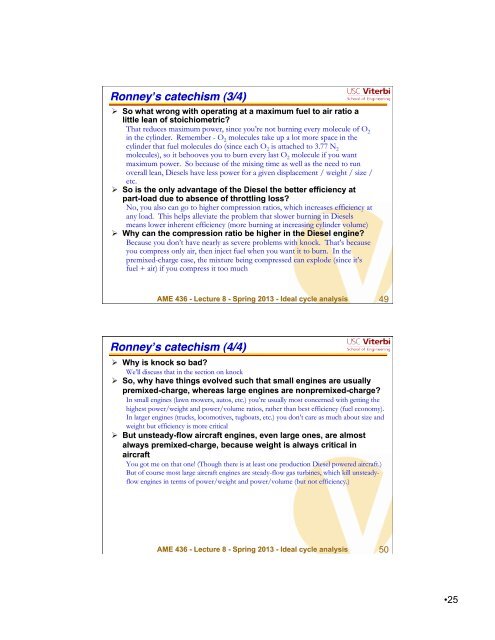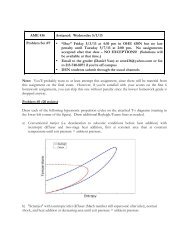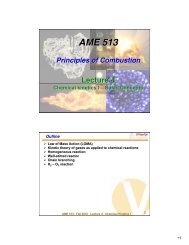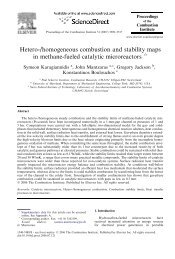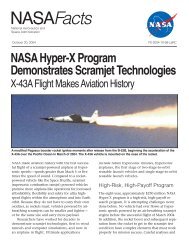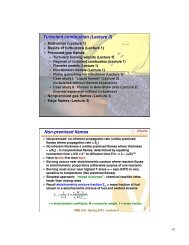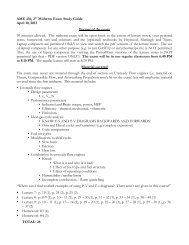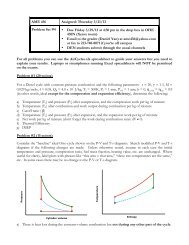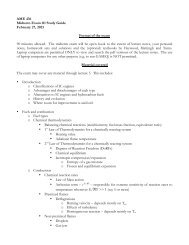AME 436
AME 436
AME 436
You also want an ePaper? Increase the reach of your titles
YUMPU automatically turns print PDFs into web optimized ePapers that Google loves.
Ronney’s catechism (3/4)"<br />
So what wrong with operating at a maximum fuel to air ratio a<br />
little lean of stoichiometric<br />
That reduces maximum power, since you’re not burning every molecule of O 2<br />
in the cylinder. Remember - O 2 molecules take up a lot more space in the<br />
cylinder that fuel molecules do (since each O 2 is attached to 3.77 N 2<br />
molecules), so it behooves you to burn every last O 2 molecule if you want<br />
maximum power. So because of the mixing time as well as the need to run<br />
overall lean, Diesels have less power for a given displacement / weight / size /<br />
etc.<br />
So is the only advantage of the Diesel the better efficiency at<br />
part-load due to absence of throttling loss<br />
No, you also can go to higher compression ratios, which increases efficiency at<br />
any load. This helps alleviate the problem that slower burning in Diesels<br />
means lower inherent efficiency (more burning at increasing cylinder volume)<br />
Why can the compression ratio be higher in the Diesel engine<br />
Because you don’t have nearly as severe problems with knock. That’s because<br />
you compress only air, then inject fuel when you want it to burn. In the<br />
premixed-charge case, the mixture being compressed can explode (since it’s<br />
fuel + air) if you compress it too much<br />
<strong>AME</strong> <strong>436</strong> - Lecture 8 - Spring 2013 - Ideal cycle analysis<br />
49<br />
Ronney’s catechism (4/4)"<br />
Why is knock so bad<br />
We’ll discuss that in the section on knock<br />
So, why have things evolved such that small engines are usually<br />
premixed-charge, whereas large engines are nonpremixed-charge<br />
In small engines (lawn mowers, autos, etc.) you’re usually most concerned with getting the<br />
highest power/weight and power/volume ratios, rather than best efficiency (fuel economy).<br />
In larger engines (trucks, locomotives, tugboats, etc.) you don’t care as much about size and<br />
weight but efficiency is more critical<br />
But unsteady-flow aircraft engines, even large ones, are almost<br />
always premixed-charge, because weight is always critical in<br />
aircraft<br />
You got me on that one! (Though there is at least one production Diesel powered aircraft.)<br />
But of course most large aircraft engines are steady-flow gas turbines, which kill unsteadyflow<br />
engines in terms of power/weight and power/volume (but not efficiency.)<br />
<strong>AME</strong> <strong>436</strong> - Lecture 8 - Spring 2013 - Ideal cycle analysis<br />
50<br />
• 25


